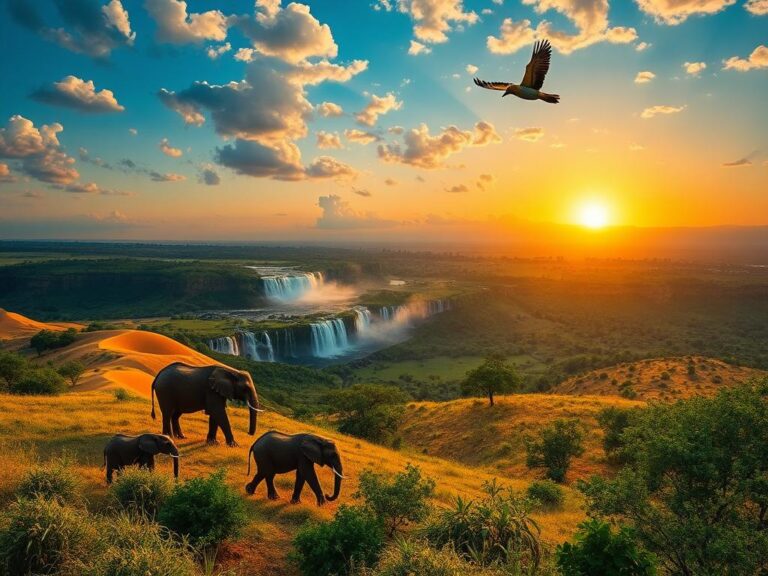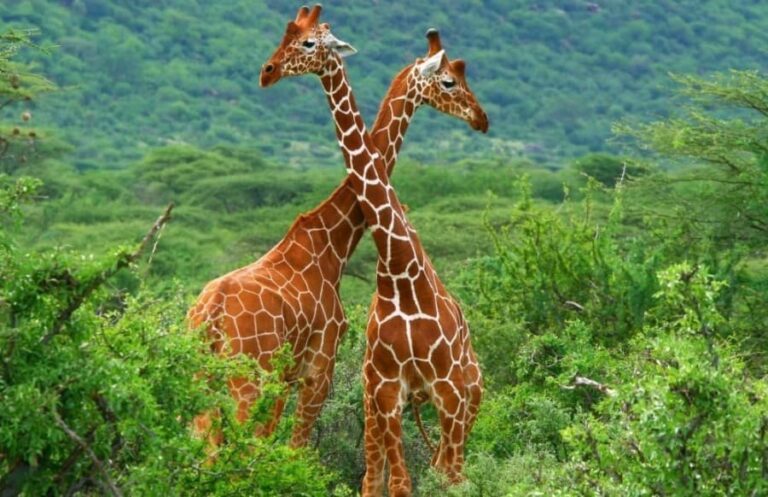
South Africa Safari: The Best Time to Go for an Unforgettable Experience
South Africa safari is a dream for many adventurers and nature lovers alike.
With its stunning landscapes, vibrant wildlife, and diverse ecosystems, deciding on the best time to go can be pivotal for an enriching experience.
This article will explore the various factors contributing to the ideal time for a safari in South Africa, including animal behaviors, weather patterns, and personal preferences.
From thrilling game drives during the dry season to the lush green landscapes of summer, you will understand the intricacies and nuances necessary to make informed decisions.
Let’s dive into the animal kingdom’s rhythm and nature’s beautiful tapestry to help you find your perfect safari adventure!
Understanding the Climate and Seasons
The climate in South Africa varies significantly across its regions.
However, it predominantly experiences two main seasons: the dry season and the wet season.
Understanding these seasons helps in determining when is the best time for you to embark on your safari adventure.
Here is a breakdown:
- Dry Season (May to September): Characterized by minimal rainfall and cooler temperatures, this is often considered the best time to view wildlife.
- Wet Season (October to April): Marked by milder temperatures and increased rainfall, this time offers lush landscapes but makes wildlife sightings more challenging.
As expert Simon Gear, a renowned safari guide, once said, “The dry months bring the animals to the waterholes, showcasing nature’s daily dramas.”
Dry Season Delights (May to September)
The dry season is a prime time for safaris in South Africa.
During this period, many animals congregate around water sources, making them easier to spot.
The vegetation thins, enhancing visibility across the savannah; additionally, the animal activity peaks, providing a lively experience on your safari.
Wildlife like elephants, lions, and buffalo are often seen on the prowl, compelling tourists to grab their cameras and capture priceless moments.
Moreover, early mornings and late afternoons provide the broadest opportunities for wildlife interaction.
If you aim to photograph or witness thrilling pursuits, the dry season guarantees exciting encounters.
Walking Safaris: The Cooler Months
Walking safaris during the dry months are a highly recommended experience.
Temperature ranges from mild to cool, allowing for comfortable exploration of the bush on foot.
Under the guidance of a skilled ranger, you can immerse yourself in the sights, sounds, and scents of nature, learning fascinating facts about wildlife.
This engagement deepens your connection with the environment, far beyond what a vehicle safari can offer.
Many parks like Kruger National Park and Addo Elephant National Park provide guided walking safari options for visitors.
“The footprints of a lion are far more thrilling when you encounter them in the wild than when you see them on a screen,” explains legendary wildlife photographer Michael Poliza.
Peak Wildlife Viewing (July to October)
Breeding Season in September
Between July and October, wildlife spotting reaches its zenith.
Animals flock to water sources, enhancing opportunities for photographers and wildlife enthusiasts alike.
Dramatic encounters will unfold more frequently, including lions hunting, hyenas scavenging, and elephants playing in waterholes.
Additionally, September welcomes the start of the breeding season for many species.
Witnessing young cubs and calves exploring their environment adds a heartwarming dimension to your safari.
It’s essential to book your safari during this period to optimize your chances of engaging with the wildlife’s daily rhythms actively.
Birdwatching Paradise (November to February)
If you’re a birding enthusiast, the rainy season from November to February will be a treat.
During this time, migratory birds arrive in droves, enriching the local avifauna.
This influx is prominently observed in areas such as the Kruger National Park and the surrounding wetlands, transforming them into a birdwatcher’s paradise.
Diverse ecosystems teem with vibrant colors, from the vivid blues of the kingfisher to the brilliant reds of the cardinal.
“A day spent birdwatching is a day spent in paradise,” says ornithologist and author Dr. Paul Hickman.
Avoiding the Crowds (Off-Peak Months)
If privacy and exclusivity are what you seek, consider traveling from November to mid-December or February to March.
During these times, crowds are significantly smaller, often allowing you a more personalized safari experience.
Smaller groups increase the tranquility of the wilderness, enabling more relaxed interactions with both the scenery and the wildlife.
Prices may be lower during these months, making it more budget-friendly for safari-goers.
Opting for a quieter time lets you embrace the natural beauty without distractions.
Family-friendly Months (June to September)
Traveling with the family? June to September are stellar months for family-friendly safaris.
During these cooler months, children can indulge in various activities, from nature walks to educational workshops.
Many lodges have family-specific programs, ensuring all ages engage in fun and learning.
Additionally, the dry weather is convenient for traveling with kids who would prefer comfortable outdoor activities.
Many families recount that their safari adventures created cherished memories that solidified their familial bonds.
Night Safaris in the Cool Seasons
Another compelling experience to consider is the night safari during the cool months.
Many parks host nocturnal tours, providing vivid experiences of the African night sounds.
It is during night safaris that you can encounter creatures that emerge once the sun has set, adding thrill to your adventure.
From observing the elusive leopard to the call of the nightjars, these experiences deepen your connection to the wild’s untamed essence.
By experiencing the wildlife energetically reawakening after dark, you will gain a unique perspective of their habitat.
Consult Local Experts
To maximize your safari experience, consider consulting local experts.
Safari lodges and experienced guides offer tailored recommendations based on your specific interests, whether you want to witness particular wildlife or prefer solo exploration.
These local influencers can provide insider tips and tricks to ensure your safari caters to your dreams and desires.
Taking the time to gather local knowledge can help fine-tune your safari plans and ensure optimized wildlife interactions.
As safari leader Peter Smith states, “The best adventures are those that are personalized and tailored to your unique desires!”
Conclusion
Choosing the best time for a South African safari hinges on various factors, including wildlife behaviors, climate, and personal interests.
The dry season from May to September remains the prime period for thrilling wildlife sightings.
However, each season offers unique insights and experiences that can enrich your journey.
Consider factors such as birdwatching, family-friendly excursions, and exclusive experiences to make the most of your safari.
Plan thoughtfully, and your South African adventure will yield unforgettable memories to last a lifetime!
FAQs
What is the best time of year to go on a safari in South Africa?
The best time to go on a safari in South Africa is during the dry months from May to September when the visibility is better, and animals are more active around water sources.
Can I go on a walking safari in South Africa?
Yes, many parks in South Africa offer guided walking safaris, especially during the cooler months. This unique experience allows you to engage closely with wildlife and learn from experienced rangers.
What should I bring on my South African safari?
Be sure to pack essentials such as lightweight clothing, binoculars, sunscreen, insect repellent, and a good camera to capture the great moments on your safari.
Are safaris suitable for families with children?
Absolutely! Many lodges cater to families, offering family-friendly programs that ensure enjoyable experiences for both adults and children.
Is it worth going on a safari during the rainy season?
Indeed! The rainy season (November to February) welcomes lush landscapes and migratory birds, providing a different but thrilling perspective of the wild.
We would love to hear your thoughts and experiences regarding your safari adventures! Share your insights or questions in the comments section below!


